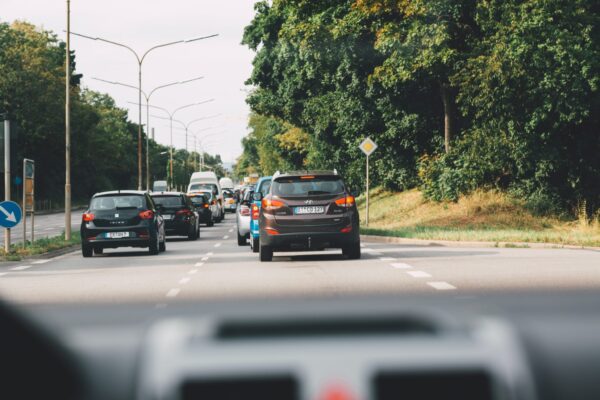
With Maine traffic at its peak during the summer months, the Maine car accident lawyers of Hardy, Wolf and Downing wish to remind all drivers to exercise more caution and raise their safety awareness while on the road. With more people on the roadways, you should be careful of other drivers, be aware of road conditions, construction projects, speed limits, pedestrians, bicyclists and wildlife.
US Route-1
Potential high-crash locations exist throughout the state, and it’s a numbers game where and when an accident can happen. Some roads and intersections are more dangerous than others. It’s no surprise that most are in areas where there are a greater number of vehicles on the road. In Maine, US 1 is listed as the most dangerous roadways in the state. Running form Kittery to Fort Kent, the road twists and turns in many different ways along the coast and up through the woods. With the various weather patterns combined with fog, rain and congested traffic, the road averages nearly ten fatalities every year.
Route 15 and Route 201
State roads Rt. 15 and Rt. 201 are also busy roads during the summer months with high accident rates. Winding through some of the more rural areas of the state, stretches are dark, narrow and have little in the way of guard rails, and sections have fallen into disrepair so look out for potholes and ruts. Always stay alert for wild animals on or near the roadway.
Highway I-95
No list would be complete without mentioning I-95. The main interstate highway running from the southwestern New Hampshire border to the Canadian border at Houlton is exceptionally busy. All three roadways have dangerous stretches, mostly relating to congested traffic areas, with I-95 from NH to Portland, and then around the cities of Lewiston, Auburn, Augusta, and Bangor, all present risks to drivers. I-95 experiences heavy commercial and commuter traffic to Augusta and the further north you drive moose and deer can pose a problem. Respectively, approximately 500 moose and 3600 deer collisions occur annually.
That’s still far below the 32,700 traffic accidents that occur annually on Maine roads. You can blame it on a number of factors ranging from dangerous road conditions, speeding, poor road signs, sudden curves, drinking, or harsh weather conditions. However, statistically, where there are more people there is a greater probability of crashes.
Dangerous Intersections
Some of the more dangerous intersections in Maine are found in Augusta at Memorial Circle and Western Avenue, and Cony Circle and Bangor Street, and the I-95 ramp to Western Avenue.
In Portland, drivers should show caution at the on the following areas:
- On and off-ramps from Congress Street to I-295,
- I-295 on-ramp from Veranda Street
- Forest Avenue & I -295 eastbound off-ramp to Forest Avenue
In Auburn, the Maine Turnpike off-ramp and Washington Street has been a problem intersection as has the corners of Elm and High Streets.
Drivers should practice safe and defensive driving. Turn on your lights, always use your blinkers and always follow the speed limit. Slow down! Reaction time is important, it can save lives.
If you are in an accident and are not seriously injured, the best thing to do is to try to stay as calm and focused as you can. As tense, stressful or even as angered as you may be, knowing what steps to take can help you deal with the catastrophe. After a crash, safety is the first priority. Depending on the severity of the accident, check the scene for injuries or dangers like downed wires or leaky fuel tanks.
Call 911 if someone is injured. Even in a minor crash, call the police to file an accident report. The officer will ask for your license, registration, insurance and other information. In turn, request the responding officer’s name, badge number and contact info. Also ask for a final copy of the police accident report for insurance purposes. Exchange full contact information with the other driver, including insurance and policy number.
Keep any talk with the other driver or that car’s occupants constructive. Do not let yours or the other driver’s emotions get the best of you. Take photos of the accident scene from every angle, showing all the damage, to document the collision. Make sure you write down what happened, too, everything that you can remember about the crash, time of day, road conditions, location, weather—it should all be written down or dictated into your phone. If you go to court it could take months and may need to remember every detail. Contact your insurance company as soon as possible to get the claims process underway.
Finally, double-check yourself for injuries. In all the commotion and adrenaline that flows after a collision, you may not even realize how much you are injured. If you think you are hurt, get to the emergency room or reach out to your doctor for assistance.
In the aftermath of an accident, if you are unsure how to proceed, turn to the experienced law firm of Hardy, Wolf and Downing, Maine car accident lawyers, to help. Experienced Maine car accident lawyers can help you analyze the facts of your case and start the process of pursuing justice on your behalf.

